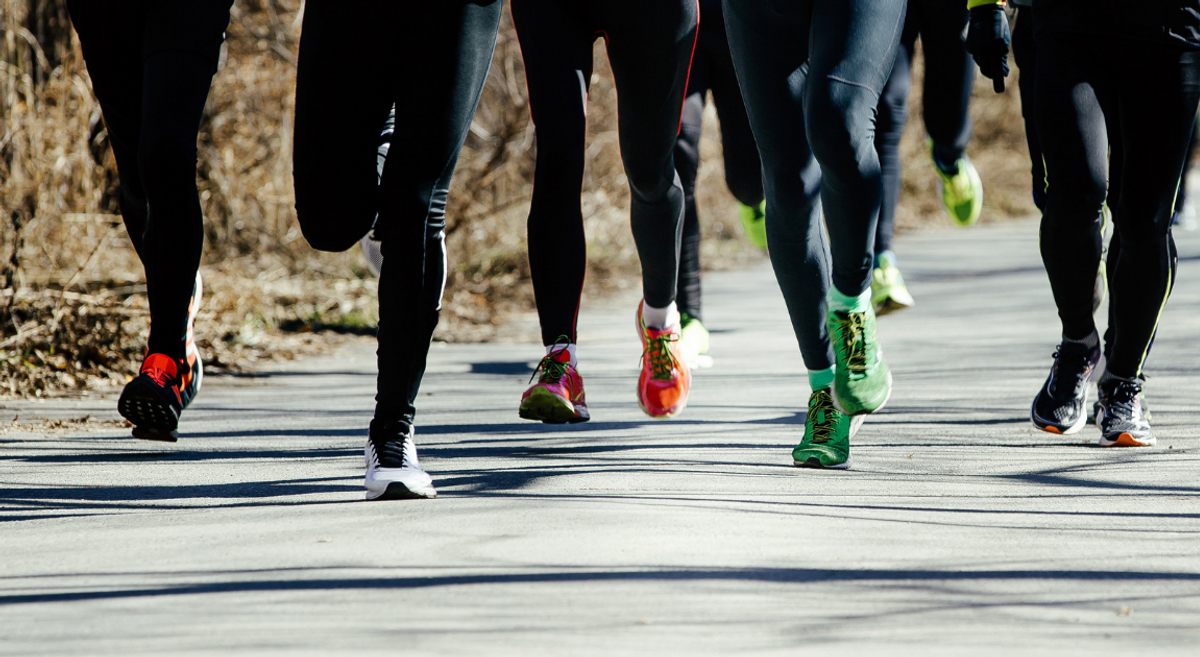A scientific paper published at the end of 2018 presented some rather interesting data from the first field-based experiment of running cadence. The study looked at data from 20 athletes from the top 25 finishers at the 2016 100 km Running World Championships in Los Alcazares, Spain.
Running cadence or stride frequency (SF) refers to the number of steps a runner takes per minute (spm). Elite and recreational runners self-select SFs in the range of 160–200 spm for the typical distance running speeds of 3–6 min/km. For decades, the number 180 spm has been used as the “gold standard” for cadence. The results presented by Geoff Burns (2019) appear to back-up the 180 spm paradigm with an average cadence across his cohort of 182 spm.
BUT!
A slightly more in-depth look at the data shows two fascinating points:
- The variation was large
- Taller runners have a slower cadence
1. Large variation
The diagram below is taken directly from the article and shows the dramatic variation between runners (155.4 –203.1 spm). Although there were no significant differences between men (A) and women (B) when factors such as height, mass, speed were accounted for, average cadences between sexes without adjustment were significantly different; Men = 177.6 spm, Women = 188.5 spm.
2. Taller runners have a slower cadence
One of the most interesting findings for me was the –123.1 spm/m relationship between a runners height and cadence. At 1.87 m tall, my recommended cadence is 164 spm. That just so happens to equate to my average cadence for my last 100 km race.
By retro-analysing the data, I was able to come up with this rather crude calculator to determine how this finding relates to your running cadence.
Running is hugely individual, so don’t stress too much if your values don’t align with those from the study. In fact, elevating your cadence can reduce energy absorption at the hip and knee joints as well as leg stiffness and peak vertical forces. Conversely, reducing your cadence increases your vertical loading rate. The main points I wanted to emphasize in this blog are the weakness of the golden 180 spm rule, the impact of height, and the true nature of variation seen in runners of all abilities.
Additional Findings
The faster you run the faster your cadence. Analysing elite runners is helpful because they represent the peak of efficiency. However, many runners aren’t running at the same speeds which this studied showed has a significant impact on your cadence. Treadmill running increases your cadence by 7 spm. If you think you could benefit from increasing your cadence, treadmill running can help. Although, I’m not 100% sure on how this increase translates onto the road or trail.
Reference
Step frequency patterns of elite ultramarathon runners during a 100-km road race. Geoffrey T. Burns, Jessica M. Zendler, and Ronald F. Zernicke (2019). J Appl Physiol. 1;126(2):462-468.



Leave a Reply